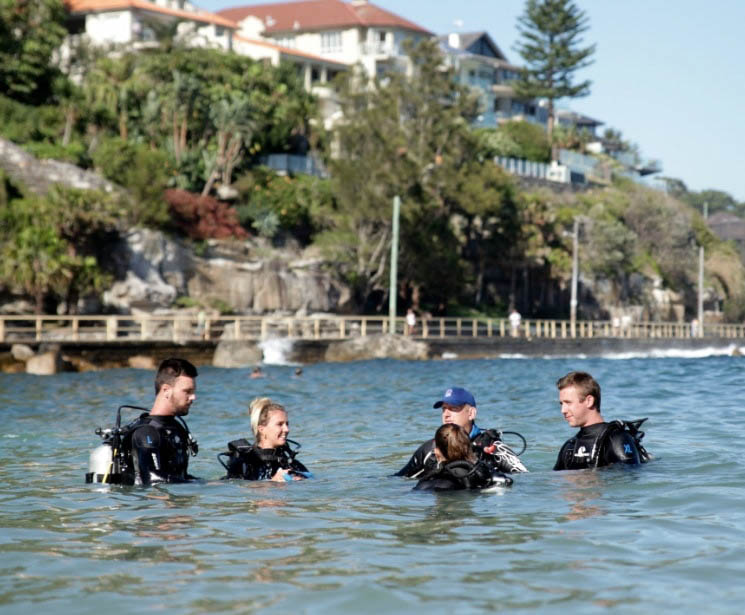Going SCUBA diving from shore dive can be very enjoyable and relatively simple to do. Although, as with boat diving, when shore diving there are also a few specific yet relatively simple things you can do to help make things go smoothly.
Before we get into detail…
Wellington and many places around NZ and oversea’s offer excellent Shore diving. The benefit’s are substantial in saving’s on boating costs, time and convenience. Relax on the beach between dives (no need to pull up anchor). Services are sometimes on the beach like toilet’s and even catering..! (No large dive boat required).
It might seem like we’re against boat diving. That is not the case. Boat diving is good too and allows you to dive where you could not otherwise get to. Keep this in mind but realise how much more SCUBA diving and exploring you can get in by doing a mix of both Boat and Shore diving.
Dive Gear for Shore Diving
Yes that’s right, some dive gear requirements may be different for Shore Diving. Mainly however, the only real equipment requirement is a pair of dive Boots suitable for your walk to the water. Commonly, and in Wellington especially, the better dive sites are near the rock’s which house much of the interesting marine life. A good pair of hard sole dive boot’s like our Atlantis B20’s are excellent for the job.
Check the Weather
Just like boat diving, a good Shore dive can be affected by the conditions. Keep an eye on the weather, in particular the swell is more prominent when shore diving. Waves (swell) is squashed up as it nears the shore making waves that can affect your water entry/exit technique or dive site selection for the day.
Entering the water
Although seemingly simple, there are a few trick’s you can use that make quite a lot of difference. Thing’s like when to put your fin’s on and defogging your dive mask. When shore diving, once you are all geared up and have done your buddy checks. Keep your fin’s tucked under your arm and mask in your hand (or around your neck). Take your time entering the water and take each step carefully as you will not be able to see clearly where you are standing.
Enter the water until you are deep enough to swim away unobstructed, normally about waist to stomach height. Now you can defog your mask and reach the water easily to rinse your mask before putting it on. Double-check your BCD is fully inflated and put your regulator in then lean back into your BCD until you are floating. Now you have full freedom of movement to fit your fins while floating on the surface. Having your regulator in means you can still breath if you roll over or anything like that. With a little practice you’ll be able to balance and not need to put your regulator in.
Then start swimming out to your decent/ascent location.
Navigation while shore diving
Although similar in most instances. It can often be easier to Navigate Underwater during a Shore Dive. Some simple things like bottom contour getting deeper or shallower are clear indicators of what direction you are swimming in relation to your entry/exit location.
Exiting the water
While exiting the water from a shore dive, you want to take your fin’s off before you get too shallow. Standing up with your dive gear on is also much easier with the help of some buoyancy. Once you reach about the same depth as when you put your mask and fins on when getting in, waist to stomach height (not too deep either. You may find yourself trying to kick in without your fins on… not as easy.) Remove your fins at a depth you can stand up in and take a few moments to take stock on that cursed gravity. Some people like to lower their mask around their neck before walking out also. As with walking in, be patient exiting the water and take each step carefully as you will not be able to see clearly where you are standing.







